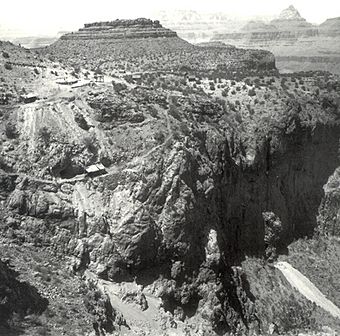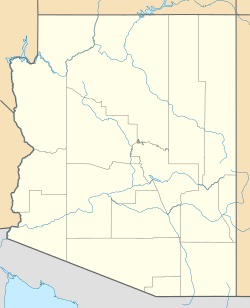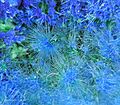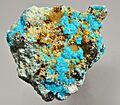Grandview Mine facts for kids
Quick facts for kids |
|
|
Grandview Mine
|
|

Grandview/Last Chance Mine, circa 1900
|
|
| Location | Grand Canyon National Park, Grand Canyon, Arizona |
|---|---|
| Built | 1892 |
| NRHP reference No. | 74000347 |
| Added to NRHP | July 09, 1974 |
The Grandview Mine, also known as the Last Chance Mine, was a copper mine located in the Grand Canyon. A man named Pete Berry started and operated this mine from 1892 to 1901. Today, the area around the mine is called the Grandview Mine Historic District. You can still see old mining equipment and the ruins of stone buildings there.
History of the Mine
Pete Berry started the Last Chance Mine in 1892. It was located on a flat area called Horseshoe Mesa. To get to the mine, he built a four-mile-long path called the Grandview Trail. Starting in 1893, mules carried the valuable copper ore out of the mine along this trail.
The copper from the mine was very pure, more than 70% copper! It even won an award at a big fair called the World's Columbian Exposition in Chicago. However, even with such good copper, the mine didn't make enough money.
In 1901, Pete Berry and his business partners sold the mine. The new owners were the Canyon Copper Company. They continued to run the mine until 1907. Later, a famous businessman named William Randolph Hearst bought the mine. He eventually sold it to the National Park Service in 1940.
What Was Mined?
The Grandview Mine was known for its copper. The copper minerals were found in a special type of rock called breccia. This rock was located along a bend in the Navajo Sandstone layers.
The mine is also famous for a unique mineral called grandviewite. This mineral was first discovered here, making the Grandview Mine its "type locality". This means it's the place where the mineral was first found and officially described.
Many beautiful mineral samples were found at Grandview. These included cyanotrichite, brochantite, and chalcoalumite. Other copper and uranium minerals were also present. Today, these specimens are very rare. It is not allowed to collect minerals in a National Park.
Protecting the Mine and Bats
In 2009, special gates were put on the mine openings. These gates help protect the bats that live inside the old mine tunnels. They also support ongoing research about bats. The gates help keep visitors safe too, by preventing them from entering dangerous areas.
The gating project was a team effort. It involved Mine Gates, Inc., Grand Canyon National Park, Bat Conservation International, and Freeport-McMoRan.
Images for kids





